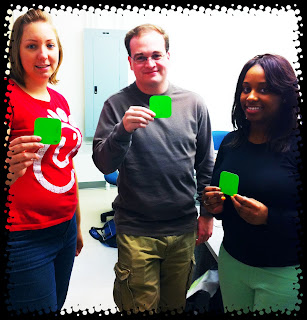I hope little O feels like this during her life. Happy. Although, it looks like she's doing a decent job of that below. Perhaps, I should concentrate on world peace instead.
Yesterday's Theories on Thursday introduced (or "reintroduced" - for those of you who already knew of Dr. Sugata Mitra's work) the idea that sometimes less is more in education. Less teacher dialogue, less sage on the stage, less lecture loser. Yep, I just referred to myself as a lecture loser. I am holding a big "L" hand gesture to my forehead right now. Let's face it, sometimes we teachers talk and talk and talk and talk.
Life is about balance.
As promised in yesterday's post - by the way, if you missed the post yesterday, you must click here and watch it. Yes, this one is a watchable post (I just had to make certain "watchable" was truly a word in the English language). Whew, we are safe. As I was saying before I interrupted my own self (see, talkie, talkie, talkie....), today's post will summarize some of Dr. Mitra's research findings. How will you use these findings in your classroom (or for our parent readers, with your children)?
Dr. Sugata Mitra's research findings:
- Children will learn regardless of income level and the presence of teachers.
- When given the opportunity, children will self-organize their own learning groups. Four learners in a group seems to be the optimal number, from Dr. Mitra's studies.
- For each group, a learner will emerge as the "group leader" or expert. This would be a great opportunity to use our metaphor, Captain, Crew and Cargo to discuss those important roles.
- Allowing ample time for learners to observe the expert and/or the other group mates is paramount. This is one of the cornerstones of my beloved Montessori education. More on Montessori education another day.
- Children in self-organized groups need plenty of time to learn by discovery. Trial and error, rehearsal and practice time all contribute to optimal learning and growth.
- Children gain much from capable peers (sorry, lecture losers....). I am sweaty at the armpits. Am I unneeded teacher?
- When teachers (and parents) take on the "grandmother approach" - admiring kids' work and asking reflective questions - children learn more. OK, now I have something to work towards.....
- There is no room for bullying when children are self-organized and working collaboratively.
- Carrots and sticks (rewards and punishments) are unnecessary when the above conditions are present; children intrinsically and innately want to learn. Does anyone else hear the sirens singing?
As we take off for the weekend, the question is this, "What will you do with these research findings? How will they impact teaching and learning (or child rearing, working with colleagues, etc)?
Food for thought. My head is spinning with the possibilities.
All the best,
Jen
PS - Will I see you next week for our first giveaway? Come on and join us!


















































